The ASRock AB350 Gaming K4 Motherboard Review: Dual M.2 at $90
by Gavin Bonshor on April 9, 2018 9:00 AM ESTBIOS
ASRock has gone with a fairly basic but enthusiast-oriented BIOS that features a black and red theme. The ASRock BIOS implementation is, as an enthusiast, one of the more intuitive BIOSs on the B350 chipset I have encountered thus far. The different panels themselves are grey with white writing across the entirety of the BIOS, giving it a subtle, yet rather gaming style theme. You know, because 'gaming' is defined as red and black.
{gallery 6153}
Upon first look at the main entry screen, as there is no EZ mode, a list of vital information can be found including RAM statistics from each DIMM (no timings however), as well as the processor type and BIOS firmware version currently installed. As mentioned, this board can support up to 64GB of memory.
As it currently stands, no B350 chipset board on the market has an external clock generator meaning the base clock cannot be altered. It’s not exactly a surprise, but what did actually slightly shock me was the sheer number of options for overclocking. It goes to show that B350 isn’t all too dissimilar in regards to performance over X370 and aside from the cost cutting to make the platform cheaper, ASRock has made no shortcuts in regards to the BIOS. Memory modules with XMP profiles do feature support, but as the specifications of the Gaming K4 state, a maximum memory speed of DDR4-3200 is potentially going to be the limit depending on the strength of your CPUs memory controller.
One relatively handy thing the ASRock has going for them in their BIOS comes in the storage section. The specifications do openly state that the second M.2 slot shares bandwidth with SATA slot three, but it’s even clearer when looking in the BIOS that both are in fact linked, and will only detect one or the other, so bear that in mind.
If a user doesn't want to make use of the LED control options via software, they can do this directing in the BIOS, although unless they know the desired 0-255 number required for red, green, and blue, it can be a little bit more difficult. The LEDs underneath the PCH heatsink do only glow red, but depending on the users taste, a separate RGB header is present meaning use of compatible RGB strips can be installed. The LED control in the BIOS could really do with an overhaul for RGB products, but I would advise for the best results, to use the ASRock RGB LED software that comes with the CD; or alternatively you can download the latest version from the ASRock website.
To be constructive, there are things ASRock can do to enhance usability such as rework their built-in RGB options within the BIOS, but it works well and does everything you would expect of a board of this caliber.
Software
It shouldn’t come as any surprise that a motherboard SKU with ‘Gaming’ in the title should focus on the key market it’s been specifically designed for. ASRock are known for their user friendly and sometimes technically sound applications (such as OC Tuner), but the AB350 Gaming K4, aside from the necessary core basic applications, does not have much extra. Avialable applications include the F-Stream overclocking utility, which is geared towards enthusiast overclockers than the regular user, the APP shop, ASRock RGB LED, and the Sound Blaster Cinema 3 audio application.
{gallery 6154}
Probably the most notable of the supported software applications is the Sound Blaster 3 utility from Creative. The software itself allows for the enablement, or disablement, of functions such as SBX Surround, which is designed to increase the realistic nature of the audio played. It’s a pretty intuitive feature and aside from the ability to create your own custom sound profiles, they do include pre-sets for things like gaming, music, movies etc. Another smart feature is SBX smart volume which moderates the volume to avoid large spikes which can cause ear discomfort.
The other handy application is the ASRock RGB LED software. It does exactly what it says on the tin and allows users to customize the fan via the AMD RGB fan header, as well as through the single RGB header (non-addressable). The red-only LEDs under the PCH heatsink can be switched off or customized into changing the style from static, to flashing, to breathing etc.


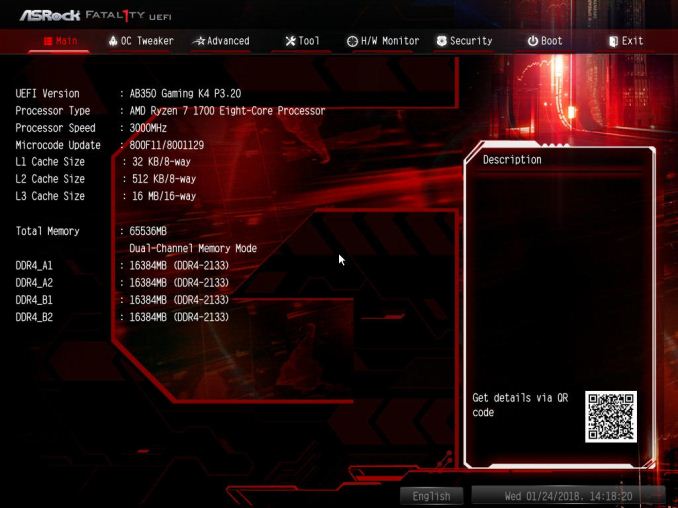
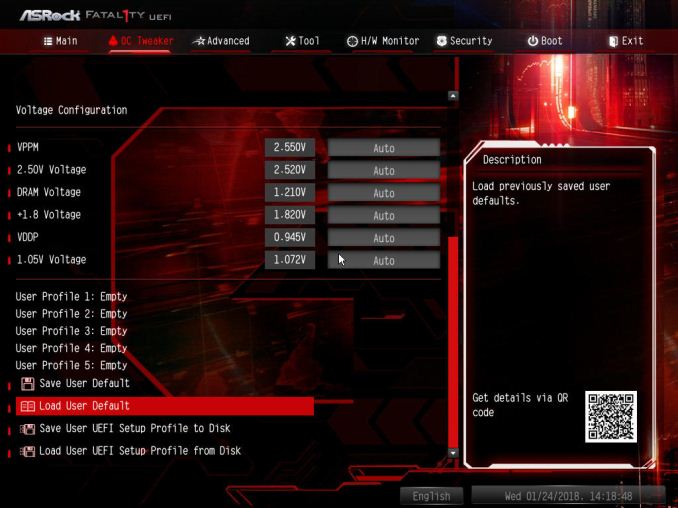
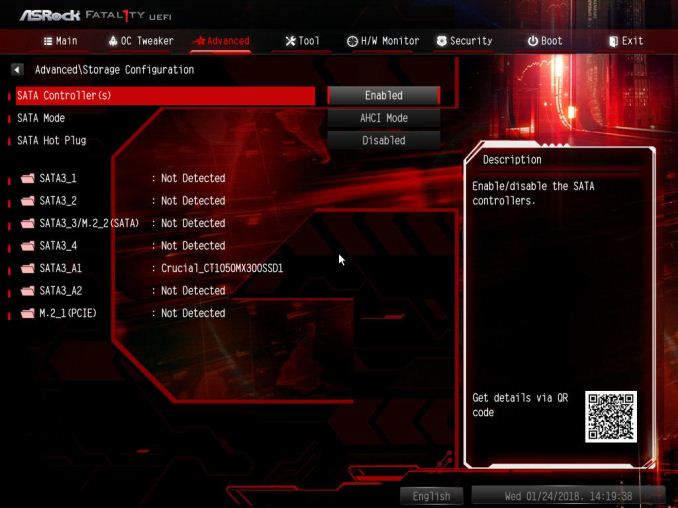
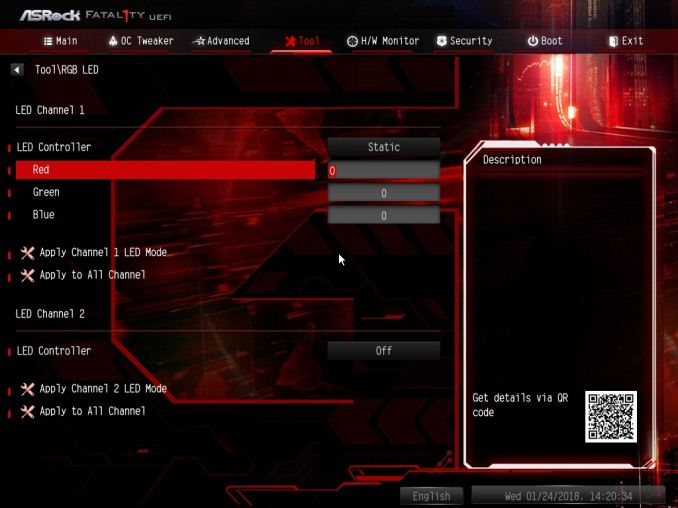
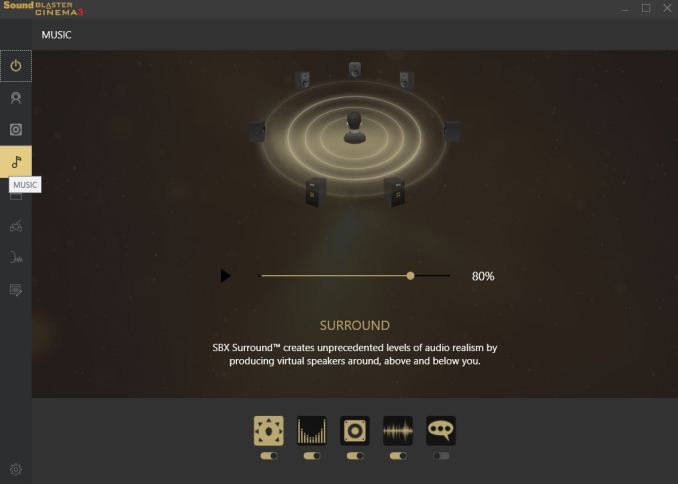
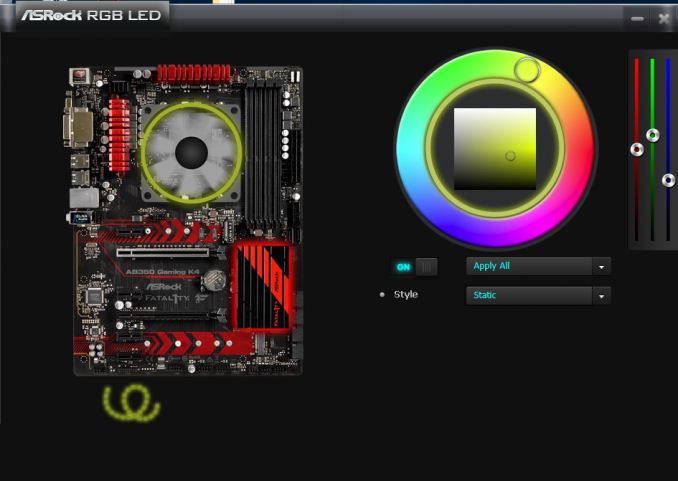








43 Comments
View All Comments
jhensjh - Tuesday, April 10, 2018 - link
Here's a couple typos for a start: "it compounts the issue.", "controllers, which which is to be expected". This article ranges from rambling sentences with excessive comma splices to bordering on nonsensical. An example of the former:"For manual overclocks, based on the information gathered from previous testing, starts off at a nominal voltage and CPU multiplier, and the multiplier is increased until the stability tests are failed."
And the latter:
"This would empty more thermal energy into the heatsinks"
vkristof - Tuesday, April 10, 2018 - link
I want to thank the author for starting to address WHY socket AM4 motherboard manufacturers do not promote/use/whatever the USB 3.1 Gen 2 ports that the AMD chipset supports.However, I assume there's at least one typo in his statement "Despite the chipset supporting USB 3.1 (10 Gbps), ASRock saves some effort in the mode complicated traces by relying on USB 3.0 instead". I assume "mode complicated" should be "MORE complicated" traces. Or?
In addition, why do they plop Asmedia USB 3.1 Gen2 controllers on some of these motherboards to provide gen 2 speeds?
I assume the Asmedia controllers require the same 10+ Gbps differential pair trace routing rules that the B350 chip does. Unless the B350 serdei are less forgiving? Or routing the 10+ Gbps pairs to the high ball count B350 requires more PCB layers?
Anyway, thanks.
Round - Tuesday, April 10, 2018 - link
"If you see any errors or typos, please by all means let us know."LOL. I appreciate the articles, but you've got to be joking, right? You don't see them? They're legion. Besides those already pointed out, take a gander at this gem...
"In regards to the performance, there wasn’t any problems or..."
I'm surprised (and sadly appalled) that it has to be pointed out, but your statement
"Time is fleeting and Google cares more about who's first than who's best..."
is a weak excuse, and nothing more. Anyone can spend 5-10 minutes before publishing. What passes for writing today has me convinced we're ready to collapse into the second coming of the dark ages, where people can't form structured sentences, don't understand tenses, plurals and possessives, or the use of adjectives and adverbs.
Glock24 - Tuesday, April 10, 2018 - link
If this was an article published on the day the media embargo expires for a new product launch I would understand the hurry to publish and lack of proper editing, but this board was launched to the market like a year ago. So why the hurry?Aspernari - Tuesday, May 8, 2018 - link
So a month later, and the editing staff and users haven't managed to catch this:"but this means the onboard audio usese the Realtek RTL8111 networking chip and the Realtek ALC892 audio codec"
A) No, it means the onboard audio is the Realtek ALC892 chipset, and the networking chip is the Realtek RTL8111. We're in deep trouble if the onboard audio is using the RTL8111.
B) It doesn't usese anything. How did that pass basic spellcheck?
PeachNCream - Tuesday, April 10, 2018 - link
Purch generates income from catching and keeping an audience that regularly visits the sites it publishes. It's against the financial interests of the company to drain AnandTech and sell it off when it dies and it's silly to imply that's happening now.In the case of this review, I'm glad to see there are mid-priced motherboards getting a little attention and it's really nice to see something other than a MSI x299 board for once since there's been quite a few of them rolling through of late.
Tewt - Tuesday, April 10, 2018 - link
I thought that must of been a mistake as well. The time for a consumer to research these motherboards that haven't been reviewed yet is nearly over so what is even the point? I had just assumed Anandtech has had a review of the ASRock X370 Taichi board for some time. I will be researching AMD 2000 cpus and 400 series boards in the next few months not older 300 series. /scratches head at Anandtech timelineRyan Smith - Tuesday, April 10, 2018 - link
Let me put things this way: we wouldn't have taken the time to review this board if we didn't think it would be relevant in the future...neogodless - Tuesday, April 10, 2018 - link
That's brilliant! (I've been strongly considering this board and a Ryzen 1700, but I've put it off long enough to wait and see what Ryzen 2xxx brings to the table (and for RAM to, like, not even bankrupt me.) Also I live near Microcenter where this board is just $50 w/ a Ryzen...Ratman6161 - Wednesday, April 11, 2018 - link
Except...one critical thing is missing in the article in the discussion of the 2200g or 2400G. That is that if you buy this motherboard, or any other existing motherboard you are taking a crap shoot on weather you will get a board that has a bios that will support the newer processor. I was considering a 2200g build for my wife until I realized that to make it work, I'd probably have to pull the R51600 out of my system and put it in the new board just so I could update the bios...or give her the motherboard from my system since that's already updated. I decided it would be easier for me to just wait a bit for the newer motherboards to come out.I too live near a Microcenter...gotta love it!